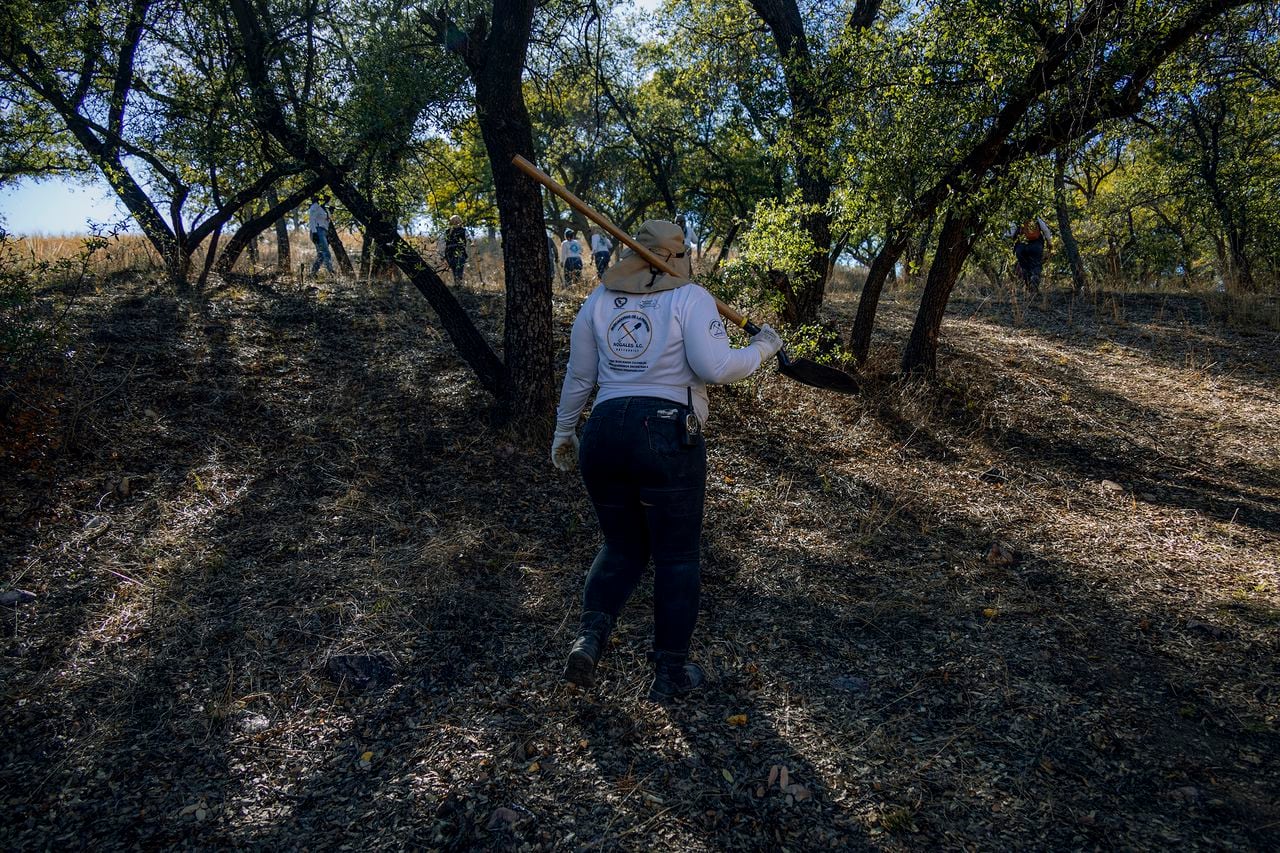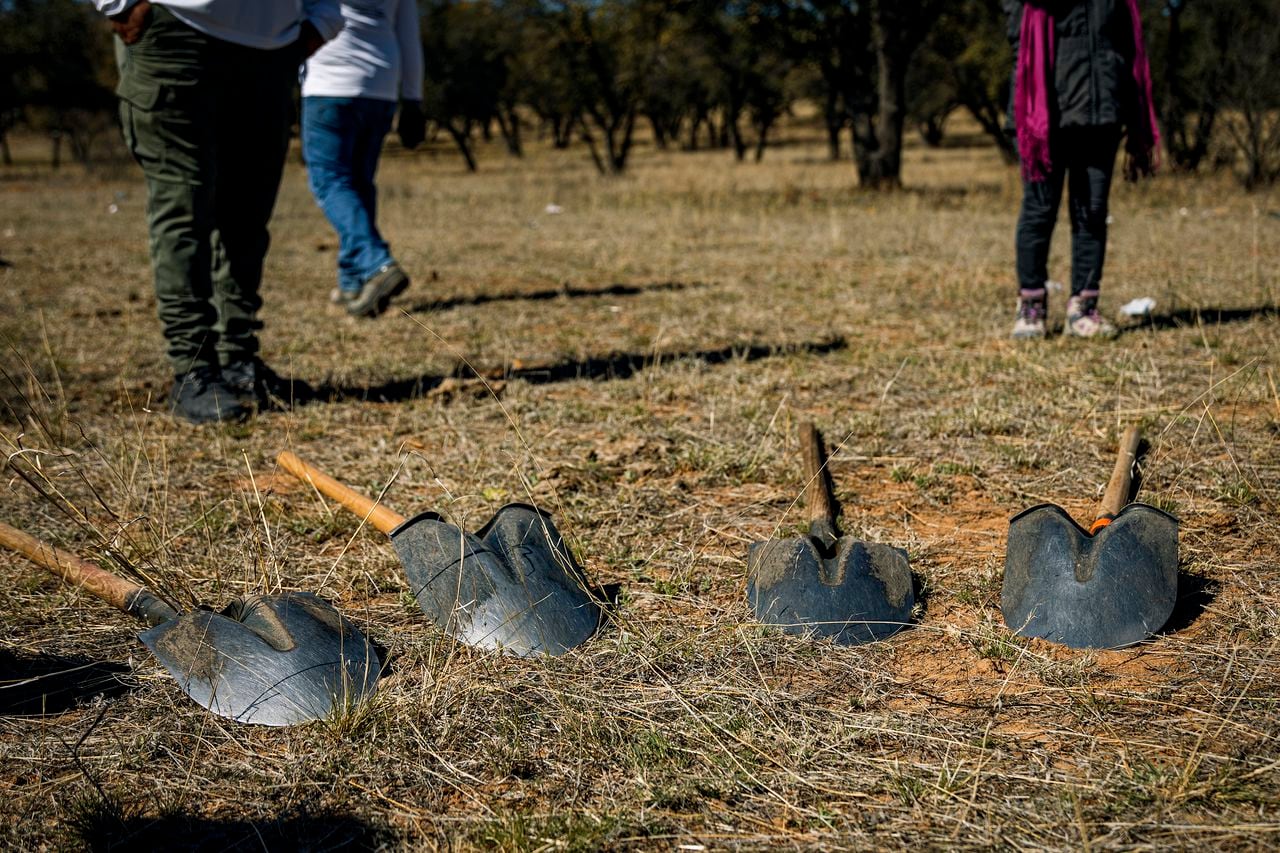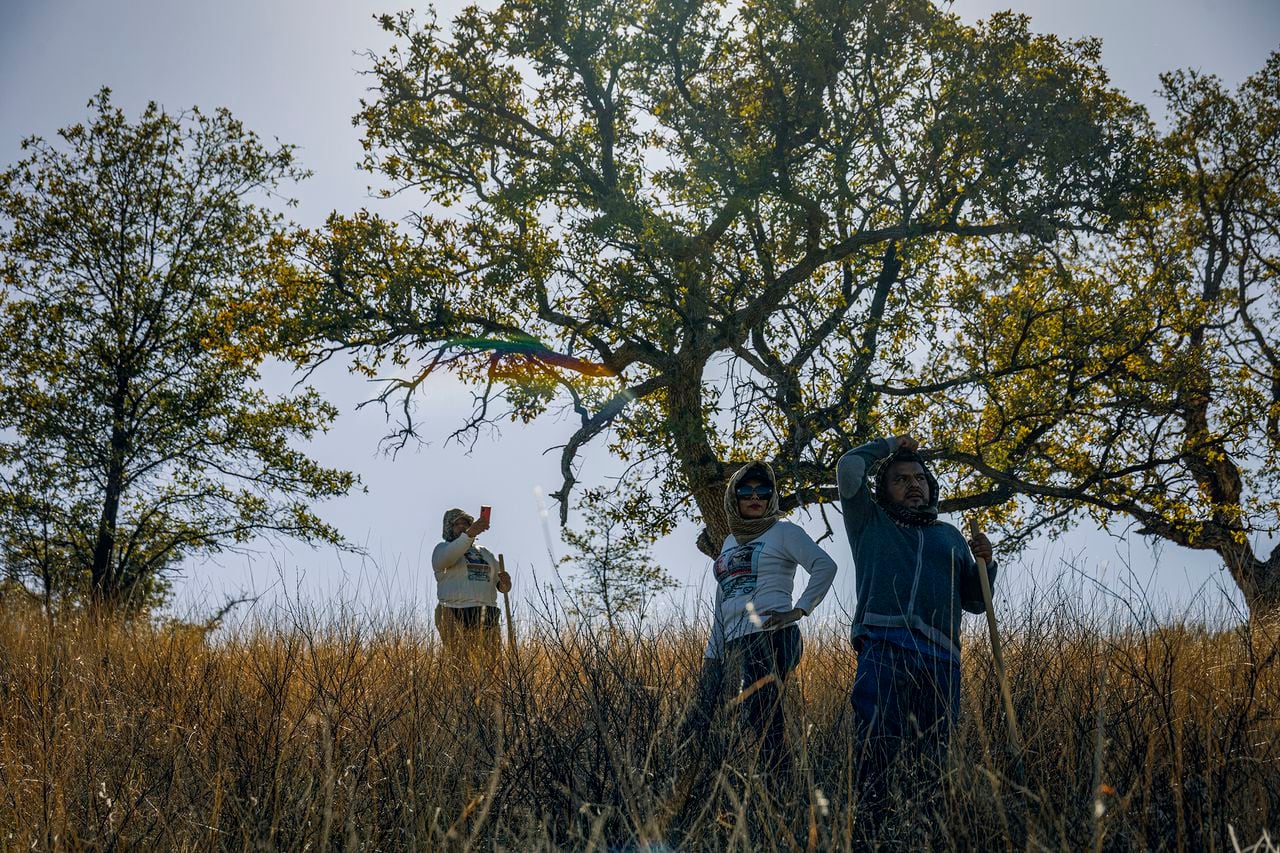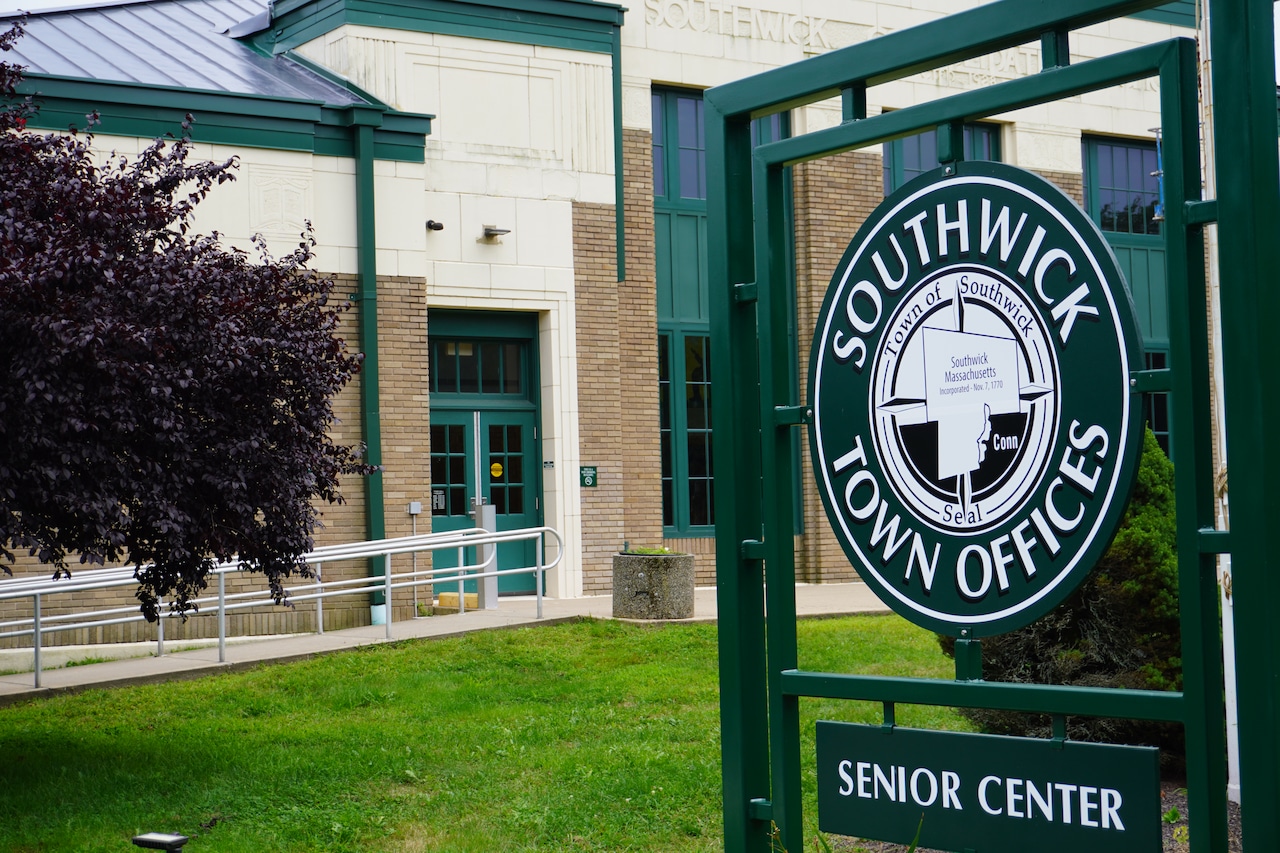Editor’s note: This story first appeared on palabra, the digital news site by the National Association of Hispanic Journalists. This story is part of the series “Migrating and Vanishing.”

Cecilia Delgado Grijalva is a buscadora (name adopted by mothers and relatives of missing persons who are devoted to finding the remains of their loved ones) and founder of Buscadoras por la Paz (Searchers for Peace), in Hermosillo, Sonora, Mexico.Photo by Andrea Godínez
A “properly done” necropsy takes between three and six hours to complete, but some state prosecutors’ offices in Mexico employ just one forensic doctor a day who can perform up to 10 necropsies in 12 hours. How many forensic doctors are needed to identify the more than 50,000 bodies in Mexico? And how many are needed to return to Guatemalan families the remains of their migrants that were found dead here?
Jairo Hernando Vivas, a forensic expert in human identification at the Coordinating Group of Mexico’s Extraordinary Forensic Identification Mechanism (MEIF), describes the challenges that local prosecutors’ offices face, especially those in areas with high rates of violent deaths, to deal with the forensic crisis in Mexico.
“You look at how the colleagues are working and you see they don’t have enough time to do an autopsy, to leave a record of all the necessary evidence; not only for the identification, but for the investigation of the crime itself. So it is understandable,” says the doctor. “What is happening at the moment? Why couldn’t they identify these bodies?”
These same local prosecutors’ offices have custody of the bodies and are responsible for sending missing person investigation files to the National Search Commission (CNB, per its acronym in Spanish), to be included in the National Registry of Missing or Unlocated Persons (RNPDNO).

A day of searching for missing migrants in Nogales, Sonora.Photo by Andrea Godínez
Any citizen, journalist or NGO member who wants to consult the RNPDNO to find out how many immigrants appear as missing will find an abysmal underreporting.
Until December 31, 2022 the CNB had published just 9.6% of the total reports of missing migrants that Mexican prosecutor’s offices had received until that point. This team discovered the undercount when the total numbers of migrants gone missing in Mexico from 2017-22 were requested from the 32 local prosecutor’s offices.
After receiving responses from 26 prosecutors’ offices, it was concluded that a total of 1,270 migrants had been reported as missing. The CNB, however, only counts 124 in the same period — an enormous gap. As far as missing migrants and migrants found dead are concerned, the prosecutors’ offices reported a total of 64, but only two are registered in the CNB.
To obtain these figures, this research team sent 157 requests of access to information to state and federal governments, and to the CNB itself.
In addition, it submitted appeals for review with prosecutors’ offices such as that of the state of Nuevo León, which initially claimed that it was “humanly impossible” to know how many investigation files and reports of missing immigrants they have.
Underreporting of missing migrants
After processing the data, this investigation team concluded that there is an underreporting in the RNPDNO, a discrepancy acknowledged by the CNB.
But why is there an undercounting if the main sources of information for this national registry are the local prosecutors’ offices?
The CNB was asked to explain why the state prosecutors’ offices had reports of 1,270 missing immigrants when their public registry shows only 124.
After insisting for six months for an interview, the CNB said they had about 1,300 immigrants categorized as missing in a database, which they refused to share under claims that it is in an “standardization phase.”
“The figure that we use as we oversee the search for migrants is about 1,300 missing persons, which is the number of cases that we are aware of and that we follow up on and then a search gets underway,” said Sonja Perkic-Krempl, CNB’s general director of search actions.
In an interview for this investigation, Perkic acknowledged that there is a public underreporting in the RNPDNO and attributed it to the fact that the reports made lacked accuracy, and that the database “does not have enough information to trace.”
So, what the national public database shows is an underreporting? she was asked.
“Yes. In fact, we are aware of this underreporting because it is difficult to track the information. I reiterate, these are cases that we are working on and tracking in order to have accurate information,” Perkic-Krempl said.
Forensic retrospective
There are more than 50,000 unidentified bodies in Mexico. MEIF does not rule out the possibility that that number includes migrants, but identifying those bodies is very challenging, due to a backlog in addressing the country’s forensic crisis.
“We start with bodies that have no name and, therefore, we don’t have any indication or suspicion that it could be a migrant,” says Vivas: “That makes it much more complex and challenging.
“What is the most complicated thing? While it is hard to work with or have information on people reported missing in the country, it will be much more difficult to obtain that information from other countries.”

The shovels used by mothers when they venture into the fields to search for the remains of their children in Nogales, Sonora.Photo by Andrea Godínez
The MEIF is working to improve the information collected and submitted by local prosecutors’ offices when exhuming remains found prior to 2019. They are currently working with at least three local prosecutors’ offices, in San Luis Potosi, Zacatecas and Tamaulipas, on a retroactive identification project to analyze unidentified bodies in morgues.
During the interview, Vivas clarified that they only provide the methodology to the prosecutors’ offices and try to match the DNA with names from the databases of people reported missing or unaccounted for. “The owners of the information continue to be the state prosecutors’ offices,” he reiterated, adding, “Both the information and the body remain in the custody of the prosecutors’ offices at all times.”
However, the work with the prosecutors’ offices is based upon agreements, which they are not obliged to sign or follow. Therefore, in order to work with the MEIF, they must rely on “political will.”
The search from Central America
When Cecilia Delgado Grijalva’s son disappeared, she founded Buscadoras por la Paz (Searchers for Peace), a group of mothers in Hermosillo, Sonora, Mexico, devoted to the task of recovering the remains of their loved ones. During that initial search, Cecilia located the remains of her son. Now she is searching for her nephew, who also went missing.
A mother who goes out into the field with a pick and a shovel hoping to at least give her son a peaceful resting place is a living testimony of the grave reality Mexico faces. But it also speaks to the struggle and persistence of these women who never stop searching.
Mothers from Central America, Guatemala in particular, contact Cecilia by telephone or social media to ask for help.

A search for family members gone missing in Sonora, Mexico.Photo by Andrea Godínez
“I have many cases of mothers who lose their children (who are) on their way to the American dream. They talk to me in tears. They tell me the location their children were in the last time they had contact. And we don’t have quick access to an immediate search. That kills us, not being able to help them at 100%. I can help them distribute their search form, but many times they are in other places, such as Tamaulipas, where we don’t have any access. And the truth is, I feel their suffering, especially because they cannot be here in Mexico,” explained Cecilia in the middle of a search in March.
Many Central American families travel to Mexico to begin the search for their loved ones.
“When they ask for their humanitarian visas to come here and look for their children, they encounter many obstacles. They are re-victimized,” Cecilia added. “We experienced what they are going through and we know what that pain is like.”
This investigation was produced with the support of the Consortium to Support Independent Journalism in Latin America (CAPIR) led by the Institute for War and Peace Reporting (IWPR).
__
Verónica Liso is an Argentinean product manager for digital native media and a freelance investigative journalist since 2013. She specializes in judicial journalism and data journalism. She has published in Cosecha Roja, Infojus Noticias, Página 12, Revista Anfibia, eldiario.ar, Perycia, among others.
Rosario Marina is a journalist specializing in data and narrative. She studied at the National University of La Plata, in Argentina. She has been covering human rights, gender and LGBTIQ issues, migration and police violence for 10 years for media outlets in Spain, Guatemala, the United States and Argentina.
Gabriela Olga Villegas is a regional digital content editor for Univision Texas and Chicago. She is the winner of a Lone Star EMMY for winter weather coverage in North Texas with the Noticias 23 team. She worked for more than seven years as a journalist for El Norte and Reforma in Monterrey, Mexico, where she began in daily news coverage and also conducted investigative journalism focused on corruption that had a national impact, such as the detour of resources in social programs and the favoritism of politicians with companies to distribute contracts and bids.
Andrea Godínez is a Guatemalan social communicator with a career of seven years dedicated to photojournalism and production of journalistic content, covering issues of migration, poverty and social inequality. She studied Communication Sciences at Universidad Rafael Landívar.





